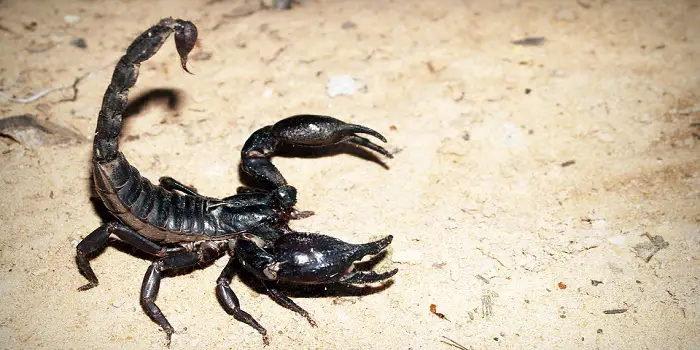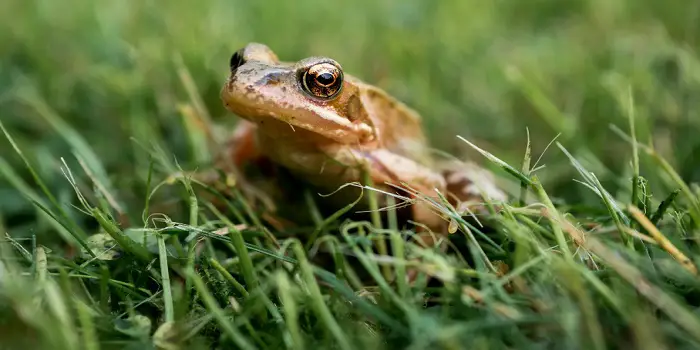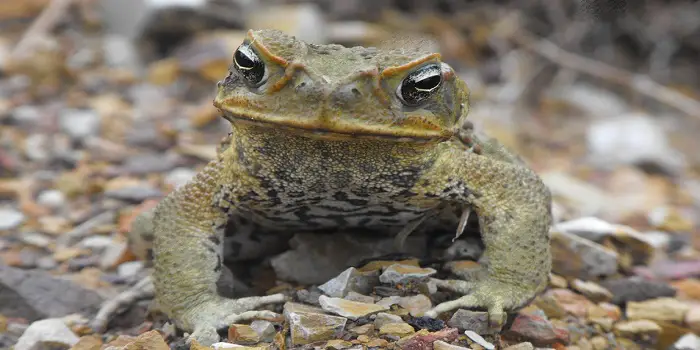
Bobcats are effective predators, which in many cases are helpful to homeowners in rural areas as they keep the mice population down.
They are also quite shy and rarely seen, but their presence in the wild, for the most part, has a beneficial effect.
However, bobcats in suburban and urban areas may become a menace to pets and even a threat to people.
If you are having issues with bobcats, then the best bait to use in traps is meat.
Meat and fish are excellent bait to use in cage traps for luring bobcats. You can also use certain herbal oils as well, but meat is what bobcats are looking to catch.
How to Prevent Bobcat Attacks?
Preventing a bobcat attack is never 100%, but you can rest assured that such attacks are quite infrequent.
It is quite rare for a bobcat to attack a human.
In almost all cases, the bobcat will back away.
But if you do feel threatened, then there are things you can do to lower the chances of being attacked by a bobcat.
- Be Observant: Especially in areas where bobcats have been seen before
- Keep Your Distance: The bobcat cannot harm you if you stay at a distance
- Back Away Slowly: If you see a bobcat, back away slowly. Do not run.
- Carry Water Spray or Air Horn: Either of these can scare away a bobcat
If you do not have a water spray bottle or air horn, try to make as much noise as possible, as this may scare away a bobcat.
When the encounter is over, call the animal control authorities as they can observe and possibly remove the bobcat from the area if it presents a threat.
Only in cases of a bobcat being rabid or extremely ill will they try to attack people.
If that occurs, you can try to defend yourself and seek medical attention if you are bitten, scratched, or otherwise injured when attacked.
How to Protect Livestock and Your Yard?
Although bobcats will rarely go after large livestock, it is possible that they might go after small or young livestock, depending on the circumstances.
The first line of defense is to put up a fence that is at least six feet in height.
Any lower and the bobcat might be able to leap the fence.
In addition, the fence should be about a foot underground to discourage digging under the fence.
Plus, you will need to lean the fence outward by roughly 16 inches to further prevent the bobcat from leaping.
Cut down any limbs that might overhang the fence so the bobcat does not climb a tree to get over.
If you believe a bobcat is in the area, you can do the following.
- Clear out all vegetation to remove any cover the bobcat might use
- Do not put out feed for birds, pets, or wildlife
- Keep the pets indoors or in secure cages or pens
- Vaccinate all pets
If you want more protection, you may place electronic devices that mimic the sound of a cougar hissing.
Cougars are natural enemies of bobcats, who will almost always back away.
Different Types of Traps that Can be Used to Catch a Bobcat
You have a wide range of traps to choose from when trying to catch a bobcat.
The one that works best for your needs will need to match the problem being caused by the bobcat.
Also, the trap needs to be suited to the location. Otherwise, the bobcat might avoid the trap.
Trapping a bobcat alive offers two main options, cage and paw-grip traps.
Cage traps are generally safer for you as the bobcat is trapped inside and has no ability to strike.
However, cage traps are less effective because unless a bobcat is quite hungry, it will not enter the enclosed space.
A paw-trap is more likely to catch a bobcat, but it does leave the rest of it free to strike at you when trying to release the animal.
In the latter case, you may want to call the animal authorities, who can remove the trapped bobcat and release it well away from your property.
Lethal killer traps can also work, particularly the body-gripping traps that are spring-loaded. It will crush a bobcat instantly.
However, lethal traps are not desirable since they can also kill different animals, including your pets.
The advantage of the cage or paw-grip traps is that whatever it catches, you can release it.
The same cannot be said about lethal traps, so it is advisable that you do not use them.

Tips for Choosing the Right Location and Bait for Luring a Wild Bobcat
The best location for placing a trap is where you see the bobcat.
As with many predators, bobcats are creatures of habit which means that they will take the same paths and approach day after day.
If you can find their den, place the trap near the den next to it, if not on the entrance or exit route.
But be quiet as you might scare the bobcat away.
a) Meat:
The best bait for traps is meat along with fish because bobcats are carnivorous.
You’ll want to use bait that has a strong odor, such as mackerel or sardines; spiced meat and even hot dogs will work.
You can also use live bait if you want, such as rabbits, squirrels, mice, or birds.
But you will have to check on them frequently to ensure they are still alive; otherwise, you will have to replace them.
b) Herbal Oils:
Certain herbal oils work well for bobcat traps, such as lovage, asafetida, and sweet musk oil.
You can use them alone or add them to the bait in the trap to attract bobcats.
Valerian powder can also be added to provide a hint of musk.
One of the most effective is catnip, which has the same effect on bobcats as it does house cats.
How to Deal with a Trapped Bobcat Safely?
So now that you have trapped the bobcat, what’s next?
If you plan on taking the bobcat away and releasing it yourself, then you will need to wear protective gloves and clothing.
A catch pole is also a good idea as this keeps the trapped bobcat at a distance.
Speaking of distance, if you are going to release a bobcat, it is best to do so at least 10 miles from your property.
Bobcats can travel a considerable distance, so anything less may have them back to your property in just a few days.
Other Related Questions:
Why do bobcats spray?
Bobcats (Lynx rufus) are well-known for marking their territory by spraying the scents.
Some of them even make more than a dozen marks per mile (using their urine and feces) to mark their home range and nearby places.
The bobcat’s urine has a distinctive smell, much like a housecat’s urine, and many animals can’t resist it when they come close to it.
Bobcat’s droppings are usually tubular and black (or dark brown) in color.
What urine repels bobcats?
The urine of a predator acts as an olfactory repellent that usually targets the sense of smell of the pest animals.
Since cougars, gray wolves, and coyotes are considered to be adult bobcats’ predators, bobcats are generally hesitant to go near them.
Bobcats also do not love coming close to humans.
And as an advantage, you can use the hairs and urine of humans (and wolf urine) for repelling them away from your property.
Can you keep a bobcat as a pet?
Taming a bobcat can be dangerous for your family and small pet animals.
Many people tried it and have faced serious consequences.
Although bobcats are not much known to kill humans, they can cause serious injuries to people and pets due to the sharp claws and teeth they have.
With that said, when they are still young, bobcats can be cute, and many people love to domesticate them.
These exotic cats are hence sold in the market at a price as high as $900.
Tiger cubs, servals, caracals, ocelots, and other mid-sized cats can even cost up to $15,000 depending on the species and other factors.
The Conclusion
Bobcats are very intelligent. They are excellent climbers and runners too.
If you talk about their running speed, they can run up to 30 miles per hour (48 kilometers per hour) and can also jump as high as 12 feet to catch the flying birds when preying.
That said, if you happen to see one on your property, remember that catching a bobcat can be very difficult for you.
So, if you can – first try to recognize and eliminate the source that may attract them.
If you still see them near, you can then try capturing them using the bait and trap method.
Just make sure that you do it carefully so that you do not get into trouble.

Welcome to ProShieldPest.com. I am Tina Jones. I have been working as a pest removal professional in Winslow, Arizona lately. At present, I love to spend my time with my family as a retiree.
Here I share all my knowledge and experiences to help people understand better how they can stop pests at their homes without actually killing them. Hopefully, the information you will find here will help in safeguarding your home! You can check more about me here.





